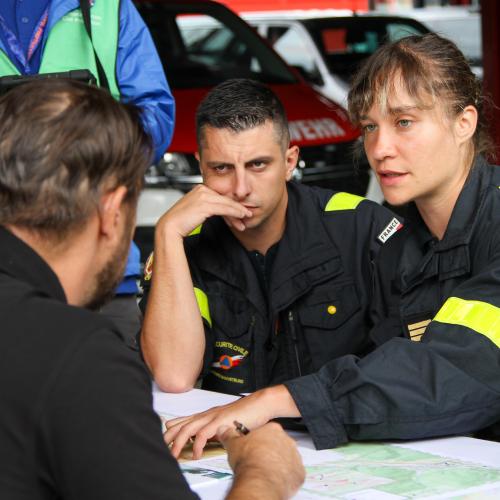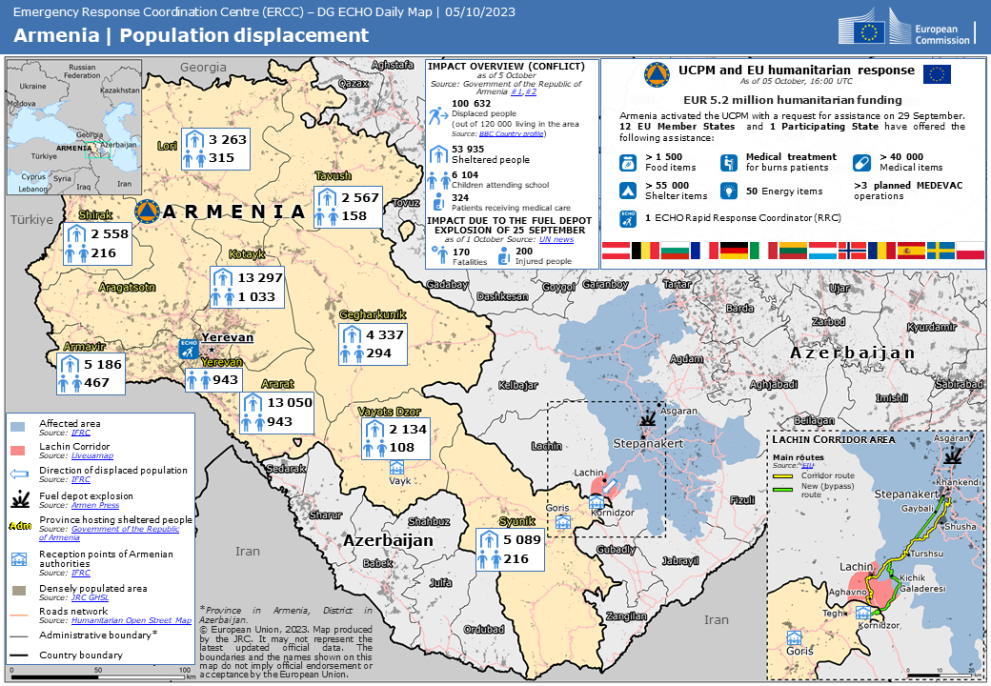
The EU's response to the Nagorno-Karabakh crisis
On 29 September Armenia activated the UCPM in the context of the Nagorno-Karabakh crisis.
The escalation of the Nagorno-Karabakh conflict and subsequent ceasefire has led to a mass exodus from the region. On 29 September Armenia activated the UCPM with a request for assistance handling the large influx of refugees coming from Nagorno-Karabakh.
The number of displaced persons reaching Armenia via the Lachin corridor is currently estimated at 100,632. As of 29 September, 69,916 people were registered upon crossing the border to Armenia. A large part of the arriving population seeks accomodation with family members, while the Government of Armenia also offers shelter. With the continuously unstable situation in Nagorno-Karabakh, more than 70% of the population has left the region.
13 member and participating states, have offered in-kind assistance via the UCPM, with over 1,500 food items and over 55,000 shelter items available. Additionally, resources such as medical and shelter items have been deployed and three MEDEVAC operations are planned. The main needs in the region are shelter and medical items, as local capacities in the Syunik region of Armenia have been exhausted. In addition to the UCPM response, the EU also released EUR 5 million in humanitarian aid funding to assist vulnerable people inside Nagorno-Karabakh and Armenia.

Commissioner for Crisis Management Janez Lenarčič traveled to Armenia on Friday, 6 October, where he met Armenia’s Deputy Prime Minister Tigran Khachatryan to discuss humanitarian coordination in the region.